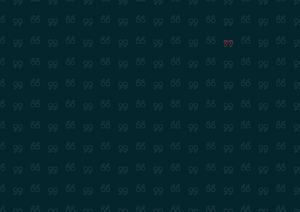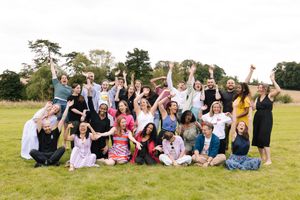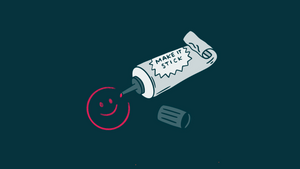New ways for Oxfam America to make a bigger impact in the world

Oxfam America is a huge charity, working on an equally huge portfolio of projects covering things like climate change, gender justice, and fairer economies. Keen to improve how they fight poverty, inequality and injustice, the leadership team invited Brink to contribute. We provided coaching and mentoring for senior people: shaping strategy, doing planning and designing their portfolio. We ran workshops to identify bottlenecks and blockers. Then we guided them towards radically new ways of working that are more adaptive and responsive. The result: a subtly different sort of transformation, and new ways for the organisation to make a bigger dent in the world.
In brief
The challenge
Work with the senior team at Oxfam America to improve how the organisation fights poverty, inequality and injustice across the world.
The dent Brink made
A transformative upgrade to behaviour and culture, leading to radical new ways of working that would ultimately allow the Oxfam to make a bigger difference in the world.
How we did it
Enabling crucial conversations: As outsiders we were able to broach some uncomfortable topics and uncover new ground. By streamlining priorities, tackling bottlenecks and hacking away at reporting and budgeting approaches we left teams with more clarity and focus, along with a more positive and efficient approach to delivery.
Progress through practice: We introduced more iterative ways of working, which meant first changing attitudes at leadership level so the organisation could become comfortable in testing its assumptions, learning from its mistakes and experimenting with new ideas.
In more detail
What do you do when you’re an organisation created to bring about change, but you discover that the change needs to start with you and your own teams?
What happens when the scale and complexity of the work is starting to slow down the pace of actually getting the work done?
Oxfam America (known as OUS) contacted Brink asking questions like these. They needed to see the big picture; their teams needed to think bigger, working more collaboratively, and taking collective ownership of strategic priorities. The ultimate goal: making Oxfam America better able to make a bigger difference in the world. We could see early on this work was all about shaping ways of working within the organisation, which in turn shaped people, behaviours and relationships.
Learning organisations learn by trying things
At the start of this work, OUS had a set of well-defined strategic priorities - fighting poverty, inequality and injustice - but they were not well aligned with day-to-day work. As with so many large organisations, internal silos made it hard for the right people to collaborate across org-chart boundaries. Without that collaboration, it was hard to build a sense of collective ownership for the work. That work, of course, is the most important thing. In 2020, Oxfam America's work helped 25.7 million people around the world.
The organisation’s strategy was spot-on, but teams were struggling to deliver in ways that clearly connected to it. Teams lacked clarity on who owned what, or how progress would be measured, and how internal organisational silos could properly pull together to deliver. People didn’t know where to start, and didn’t know when they were finished.
Brink suggested iterative, more adaptive ways of working. That doesn’t just mean getting teams to try new things, but also changing mindsets and attitudes at leadership level. If an organisation wants to learn, it needs to be comfortable with making mistakes. It needs to get good at trying things.
One team member said: "We wanted to get better at stating our organisation's assumptions, testing them, and making changes to achieve goals." More directly, the official OUS strategy declared: “We want to bring about an evolution in what we do, but a revolution in how we do it.”
It’s good to talk
Most of our work was about enabling conversations. As outsiders looking in, we were in a position to ask questions that OUS staffers might feel uncomfortable asking. We were able to guide the conversations over rocky ground.
Among other things, Brink worked to:
- Link immediate priorities to strategic ones centred around tackling poverty, inequality and injustice
- Simplify lists of priorities, pulling related ones together into “buckets”
- Conduct reviews around priority buckets, to give teams that don’t normally work together a chance to reflect at a higher level
- Design new iterative approaches to learning, reporting and budgeting
- Designed workshop sessions so that leaders could examine priorities and bottlenecks
The work is still ongoing, but the results so far have been striking:
- More clarity around vision and action
- Conduct reviews around priority buckets, to give teams that don’t normally work together a chance to reflect at a higher level
- More shared ownership of delivery
- Clearer, easier decision-making
- A closer, more collaborative and collegiate team atmosphere across the organisation
- Teams said the new adaptive techniques helped them feel "more unified, more joined up".
- A senior leader commented that they could see "more sharpness and focus" in how the teams think and work together.
You can’t unlearn an insight
“Transformation” is a big buzzword in the consulting industry these days, and it’s been said before how the best kind of transformation is around people, not technology. Computers and software are much easier to upgrade than behaviour and culture, but it's the latter that has the largest and longest-lasting impact.
Our goal was to work with teams and leaders as they learned new ideas and approaches, which they can continuously adapt and change long after we’ve stepped away.
It’s that culture of experimentation and adaptation that’s key. That’s not a template to copy-and-paste on to all projects forever, it’s a way of working that the OUS team can apply in a million different ways.
We didn’t want to leave behind lists, slide packs and operational models. Rather, we wanted to leave behind learning with longevity. This should be org change that lives on, long after the consultants have left the building.
Oxfam America is a huge charity, working on an equally huge portfolio of projects covering things like climate change, gender justice, and fairer economies. Keen to improve how they fight poverty, inequality and injustice, the leadership team invited Brink to contribute. We provided coaching and mentoring for senior people: shaping strategy, doing planning and designing their portfolio. We ran workshops to identify bottlenecks and blockers. Then we guided them towards radically new ways of working that are more adaptive and responsive. The result: a subtly different sort of transformation, and new ways for the organisation to make a bigger dent in the world.
In brief
The challenge
Work with the senior team at Oxfam America to improve how the organisation fights poverty, inequality and injustice across the world.
The dent Brink made
A transformative upgrade to behaviour and culture, leading to radical new ways of working that would ultimately allow the Oxfam to make a bigger difference in the world.
How we did it
Enabling crucial conversations: As outsiders we were able to broach some uncomfortable topics and uncover new ground. By streamlining priorities, tackling bottlenecks and hacking away at reporting and budgeting approaches we left teams with more clarity and focus, along with a more positive and efficient approach to delivery.
Progress through practice: We introduced more iterative ways of working, which meant first changing attitudes at leadership level so the organisation could become comfortable in testing its assumptions, learning from its mistakes and experimenting with new ideas.
In more detail
What do you do when you’re an organisation created to bring about change, but you discover that the change needs to start with you and your own teams?
What happens when the scale and complexity of the work is starting to slow down the pace of actually getting the work done?
Oxfam America (known as OUS) contacted Brink asking questions like these. They needed to see the big picture; their teams needed to think bigger, working more collaboratively, and taking collective ownership of strategic priorities. The ultimate goal: making Oxfam America better able to make a bigger difference in the world. We could see early on this work was all about shaping ways of working within the organisation, which in turn shaped people, behaviours and relationships.
Learning organisations learn by trying things
At the start of this work, OUS had a set of well-defined strategic priorities - fighting poverty, inequality and injustice - but they were not well aligned with day-to-day work. As with so many large organisations, internal silos made it hard for the right people to collaborate across org-chart boundaries. Without that collaboration, it was hard to build a sense of collective ownership for the work. That work, of course, is the most important thing. In 2020, Oxfam America's work helped 25.7 million people around the world.
The organisation’s strategy was spot-on, but teams were struggling to deliver in ways that clearly connected to it. Teams lacked clarity on who owned what, or how progress would be measured, and how internal organisational silos could properly pull together to deliver. People didn’t know where to start, and didn’t know when they were finished.
Brink suggested iterative, more adaptive ways of working. That doesn’t just mean getting teams to try new things, but also changing mindsets and attitudes at leadership level. If an organisation wants to learn, it needs to be comfortable with making mistakes. It needs to get good at trying things.
One team member said: "We wanted to get better at stating our organisation's assumptions, testing them, and making changes to achieve goals." More directly, the official OUS strategy declared: “We want to bring about an evolution in what we do, but a revolution in how we do it.”
It’s good to talk
Most of our work was about enabling conversations. As outsiders looking in, we were in a position to ask questions that OUS staffers might feel uncomfortable asking. We were able to guide the conversations over rocky ground.
Among other things, Brink worked to:
- Link immediate priorities to strategic ones centred around tackling poverty, inequality and injustice
- Simplify lists of priorities, pulling related ones together into “buckets”
- Conduct reviews around priority buckets, to give teams that don’t normally work together a chance to reflect at a higher level
- Design new iterative approaches to learning, reporting and budgeting
- Designed workshop sessions so that leaders could examine priorities and bottlenecks
The work is still ongoing, but the results so far have been striking:
- More clarity around vision and action
- Conduct reviews around priority buckets, to give teams that don’t normally work together a chance to reflect at a higher level
- More shared ownership of delivery
- Clearer, easier decision-making
- A closer, more collaborative and collegiate team atmosphere across the organisation
- Teams said the new adaptive techniques helped them feel "more unified, more joined up".
- A senior leader commented that they could see "more sharpness and focus" in how the teams think and work together.
You can’t unlearn an insight
“Transformation” is a big buzzword in the consulting industry these days, and it’s been said before how the best kind of transformation is around people, not technology. Computers and software are much easier to upgrade than behaviour and culture, but it's the latter that has the largest and longest-lasting impact.
Our goal was to work with teams and leaders as they learned new ideas and approaches, which they can continuously adapt and change long after we’ve stepped away.
It’s that culture of experimentation and adaptation that’s key. That’s not a template to copy-and-paste on to all projects forever, it’s a way of working that the OUS team can apply in a million different ways.
We didn’t want to leave behind lists, slide packs and operational models. Rather, we wanted to leave behind learning with longevity. This should be org change that lives on, long after the consultants have left the building.
What we learned along the way
Learning is a two-way process, and we learned plenty of things along the way, such as:
- The structure of the organisation gives a lot of clues about where to focus attention. In this case structural silos for delivery management and strategy-setting were causing confusion for teams.
- Strategy can be built from the bottom up, rather than imposed from the top down. Doing it this way makes more sense when changing circumstances require constant small strategy shifts.
- Coaching is a relationship all of its own, and the best coaching comes from investment in the personal and team relationships formed along the way. Getting buy-in from the top makes a huge difference: it’s hard to coach a team that hasn’t actively asked to be coached.



